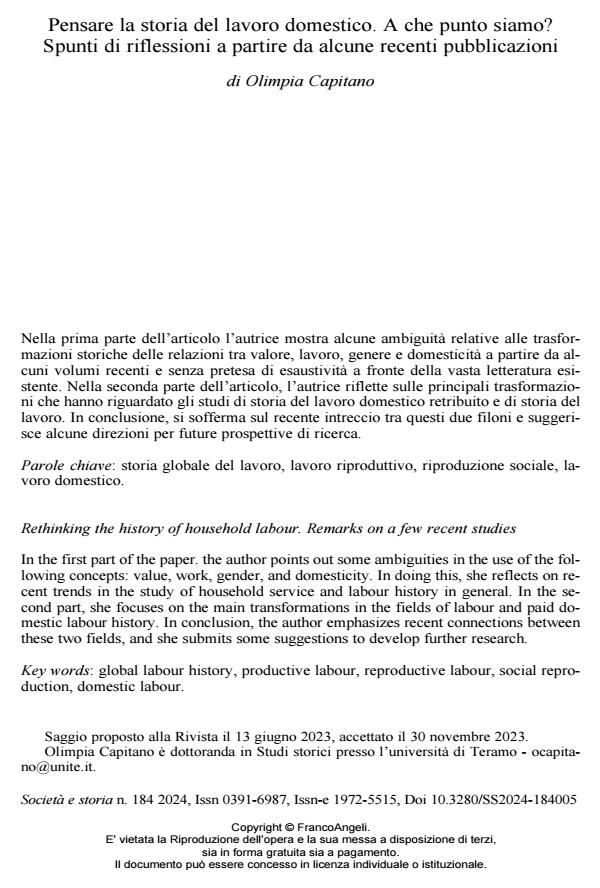Pensare la storia del lavoro domestico. A che punto siamo? Spunti di riflessioni a partire da alcune recenti pubblicazioni
Titolo Rivista SOCIETÀ E STORIA
Autori/Curatori Olimpia Capitano
Anno di pubblicazione 2024 Fascicolo 2024/184
Lingua Italiano Numero pagine 17 P. 349-365 Dimensione file 209 KB
DOI 10.3280/SS2024-184005
Il DOI è il codice a barre della proprietà intellettuale: per saperne di più
clicca qui
Qui sotto puoi vedere in anteprima la prima pagina di questo articolo.
Se questo articolo ti interessa, lo puoi acquistare (e scaricare in formato pdf) seguendo le facili indicazioni per acquistare il download credit. Acquista Download Credits per scaricare questo Articolo in formato PDF

FrancoAngeli è membro della Publishers International Linking Association, Inc (PILA)associazione indipendente e non profit per facilitare (attraverso i servizi tecnologici implementati da CrossRef.org) l’accesso degli studiosi ai contenuti digitali nelle pubblicazioni professionali e scientifiche
Nella prima parte dell’articolo l’autrice mostra alcune ambiguità relative alle trasformazioni storiche delle relazioni tra valore, lavoro, genere e domesticità a partire da alcuni volumi recenti e senza pretesa di esaustività a fronte della vasta letteratura esistente. Nella seconda parte dell’articolo, l’autrice riflette sulle principali trasformazioni che hanno riguardato gli studi di storia del lavoro domestico retribuito e di storia del lavoro. In conclusione, si sofferma sul recente intreccio tra questi due filoni e suggerisce alcune direzioni per future prospettive di ricerca.
Parole chiave:storia globale del lavoro, lavoro riproduttivo, riproduzione sociale, lavoro domestico.
Olimpia Capitano, Pensare la storia del lavoro domestico. A che punto siamo? Spunti di riflessioni a partire da alcune recenti pubblicazioni in "SOCIETÀ E STORIA " 184/2024, pp 349-365, DOI: 10.3280/SS2024-184005